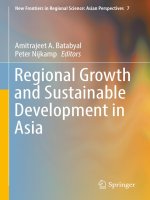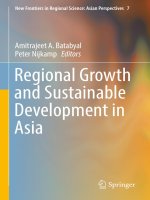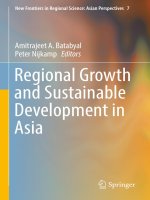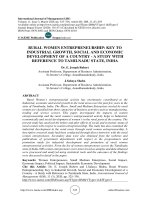Economic growth and economic development 169
Bạn đang xem bản rút gọn của tài liệu. Xem và tải ngay bản đầy đủ của tài liệu tại đây (79.32 KB, 1 trang )
CHAPTER 4
Fundamental Determinants of Differences in Economic
Performance
4.1. Proximate Versus Fundamental Causes
“...the factors we have listed (innovation, economies of scale, education, capital accumulation etc.) are not causes of growth; they are
growth.” (North and Thomas, 1973, p. 2, italics in original).
The previous chapter illustrate how the Solow growth model can be used to
understand cross-country income differences and the process of economic growth. In
the context of the Solow growth model, the process of economic growth is driven by
technological progress. Cross-country income differences, on the other hand, are due
to a combination of technology differences, differences in physical capital per worker
and in human capital per worker. While this approach provides us with a good
starting point and delineates potential sources of economic growth and cross-country
income differences, these sources are only proximate causes of economic growth and
economic success. Let us focus on cross-country income differences, for example. As
soon as we attempt to explain these differences with technology, physical capital and
human capital differences, an obvious next question presents itself: if technology,
physical capital and human capital are so important in understanding differences
in the wealth of nations and if they can account for five-fold, ten-fold, twenty-fold
or even thirty-fold differences in income per capita across countries, then why is it
that societies do not improve their technologies, invest more in physical capital, and
accumulate more human capital?
It appears therefore that any explanation that simply relies on technology, physical capital and human capital differences across countries is, at some level, incomplete. There must be some other reasons underneath those, reasons which we will
155









